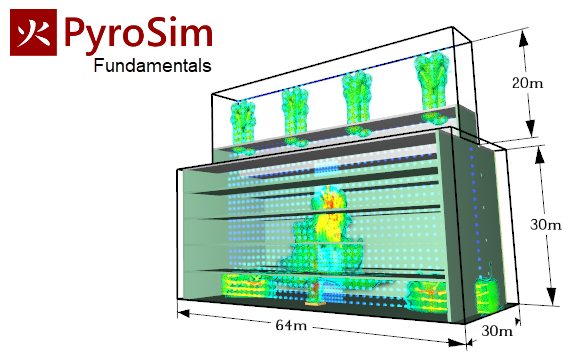

The studies on the fire spread in buildings have attracted more attention due to the heavy losses in property and lives as a result of these fires, and to reduce these losses, designers must take into account the design variables affecting the fire spread when preparing designs. The fire safety in buildings faces severe challenges as a result of the high dense population. The fire is often caused by man-made errors, such as smoking, heating, cooking, etc., or by electrical problems such as short circuits, old wiring, and faulty fuses. Safe design lies in the employment of all measures to reduce the impact of fire hazards. When a fire occurs, it is difficult to control it in the high-rise buildings, and it will be greater fire risk and the chance of saving lives less. The increase in residence in cities by the rural population as a result of industrial growth and the increase in employment opportunities in them, as this formed a population density that led to the vertical expansion of construction by exploiting less space to secure public services, and thus the height of buildings, has become a kind of urbanization all over the world. SNIP takes into account characteristics of the source's subject field, which is the set of documents citing that source. It helps you make a direct comparison of sources in different subject fields. SNIP measures a source’s contextual citation impact by weighting citations based on the total number of citations in a subject field. Source Normalized Impact per Paper (SNIP) 2021: 0.596 ℹ Source Normalized Impact per Paper(SNIP): SJR is a measure of scientific influence of journals that accounts for both the number of citations received by a journal and the importance or prestige of the journals where such citations come from It measures the scientific influence of the average article in a journal, it expresses how central to the global scientific discussion an average article of the journal is.

It is based on the idea that 'all citations are not created equal'. The SJR is a size-independent prestige indicator that ranks journals by their 'average prestige per article'. SCImago Journal Rank (SJR) 2021: 0.220 ℹ SCImago Journal Rank (SJR): CiteScore is the number of citations received by a journal in one year to documents published in the three previous years, divided by the number of documents indexed in Scopus published in those same three years.


 0 kommentar(er)
0 kommentar(er)
